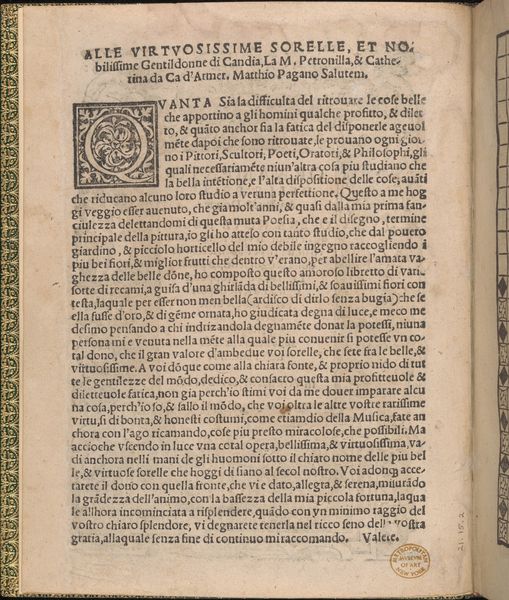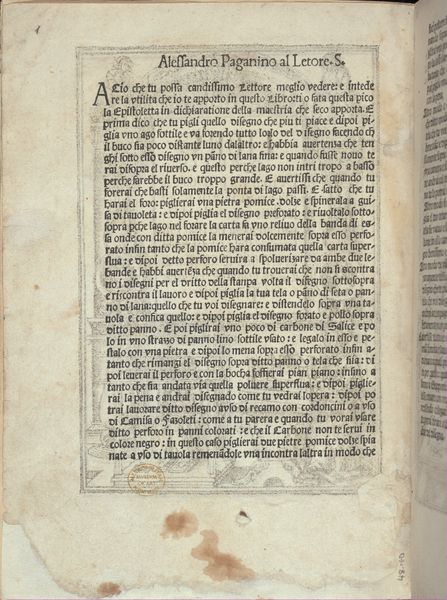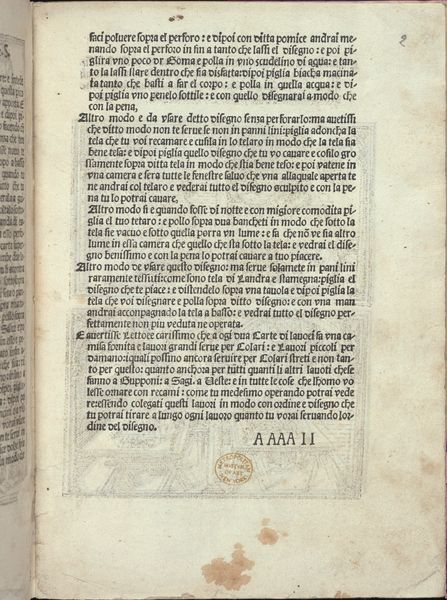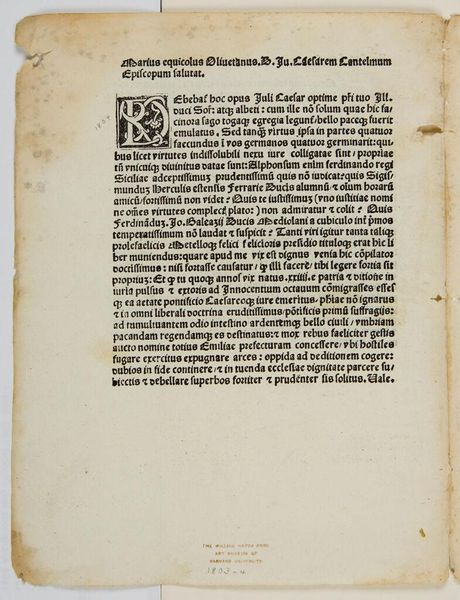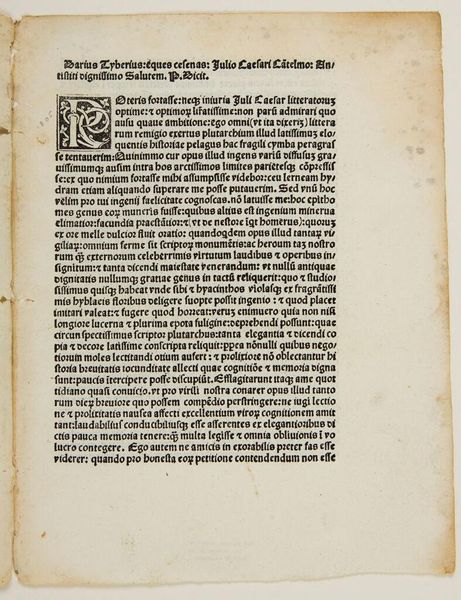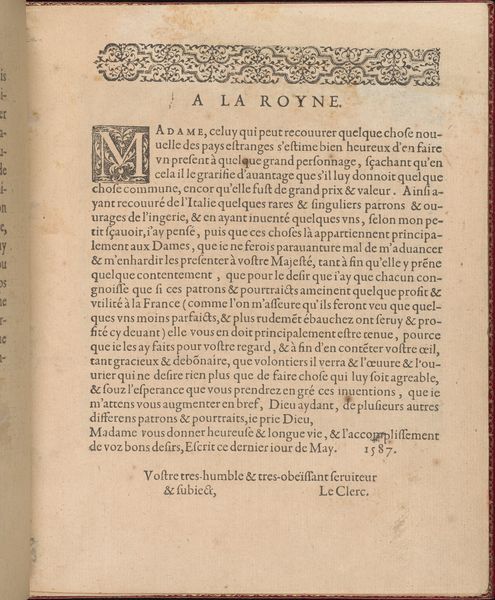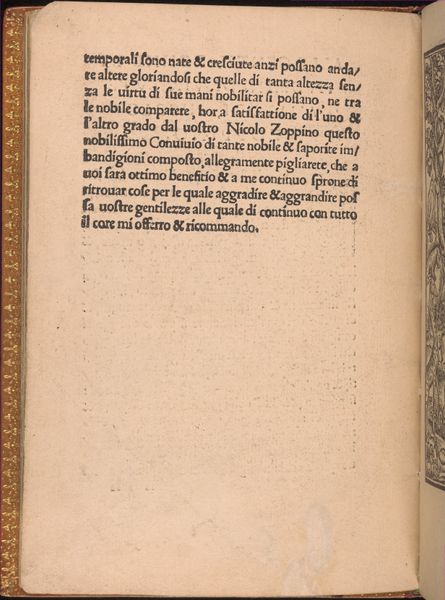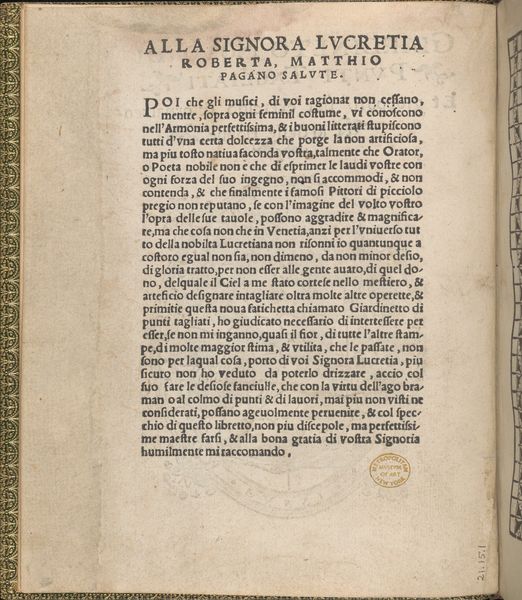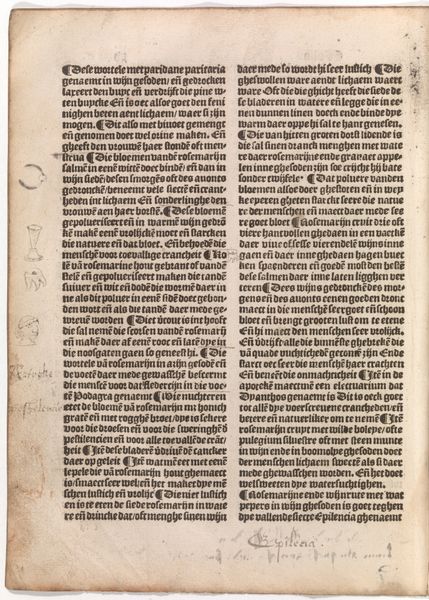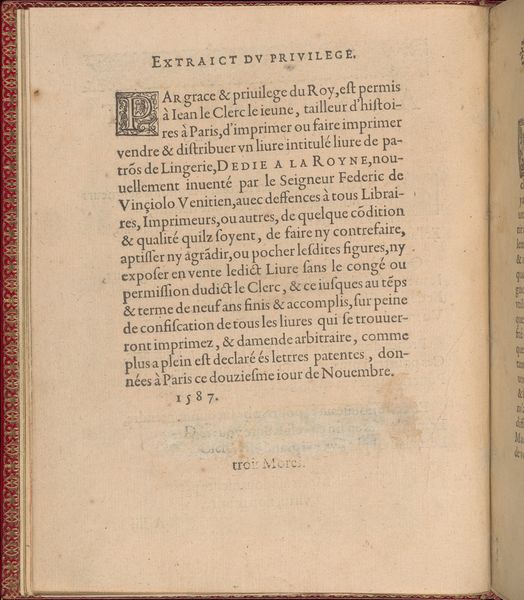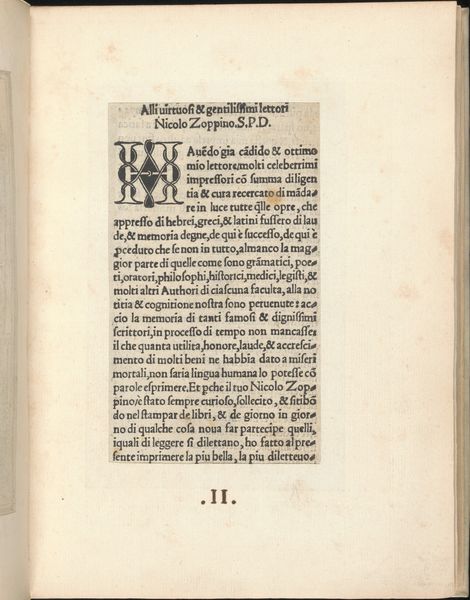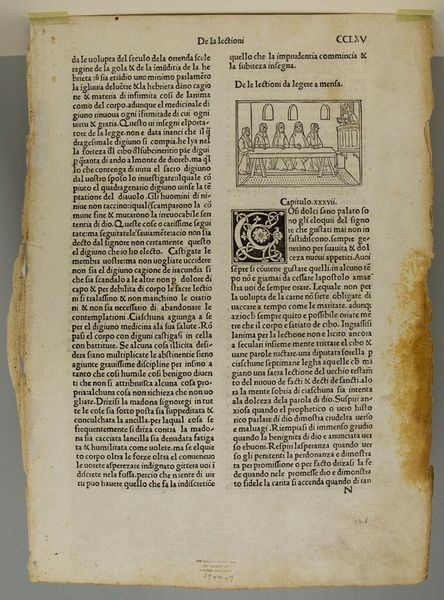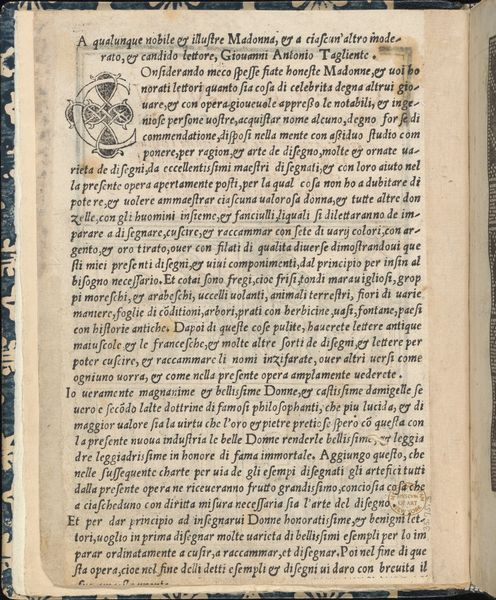
Esemplario di Lauori..., page 14 (verso) 1532
0:00
0:00
drawing, graphic-art, print, paper, typography
#
drawing
#
graphic-art
# print
#
book
#
paper
#
typography
#
journal
#
italian-renaissance
Dimensions: Overall: 8 7/16 x 6 5/16 in. (21.5 x 16 cm)
Copyright: Public Domain
Editor: This is a page from "Esemplario di Lauori..., page 14 (verso)", created in 1532 by Giovanni Andrea Vavassore. It's a print on paper, essentially a page from a book of needlework patterns. It strikes me as remarkably utilitarian; a real glimpse into the everyday skills valued at the time. What do you see in this piece? Curator: It’s so much more than just a utilitarian object. This "Esemplario" offers us a crucial lens through which to examine the lives and labour of women in the Italian Renaissance. We see a democratization of artistic skill, through reproducible images and accessible instructions, making design and embellishment tools available to women. Who has access to these skills? What does it mean to be taught refinement? What's the power dynamic implied in its pages? Editor: I hadn't thought about it that way, viewing it instead as almost a proto-DIY manual! So, you are saying it offered opportunities, but maybe it also prescribed a certain role or identity to the user? Curator: Exactly. It is an opportunity, a method of self-expression and, potentially, a form of economic activity within the domestic sphere. But simultaneously, it reinforces gendered expectations. The book subtly dictates how women ought to occupy their time, and it guides the social currency their creations generate through embellished garments. This volume is an index of power as much as a directory of stitches. What are women being allowed to create, and what were they perhaps discouraged from exploring? Editor: That is very compelling. Now, I can't see it as a simple manual again. This adds a much deeper dimension. Curator: It shows how everyday objects like this provide fertile ground for understanding gender and labour during this time. Thinking about who this book was *for*, what their lives might have looked like, transforms how we understand not just the object, but that entire era.
Comments
No comments
Be the first to comment and join the conversation on the ultimate creative platform.
